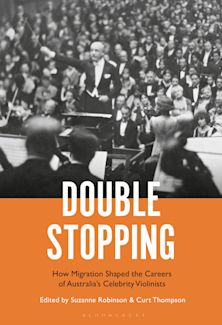The Viennese Waltz
Decadence and the Decline of Austria’s Unconscious
The Viennese Waltz
Decadence and the Decline of Austria’s Unconscious
This product is usually dispatched within 1 week
- Delivery and returns info
-
Free US delivery on orders $35 or over
Description
Satiricized by Strauss II to highlight the deceptive aristocratic class, under Schoenberg, Mahler, and Webern’s pens the waltz became the pivot between the conscious and unconscious, forcing a paralytic “second state” analogous with the stagnation of the Habsburg Empire. The Viennese Waltz shows how, between 1864 – 1928, the waltz altered from signifier of upper-class artificeto the link between man and nature and between Viennese and “Other.” Hood wields the Freudian concepts of the uncanny and the doppelgänger to explain this revolution from the simple signification of a dance to the psychological anxiety of a subject’s place in society.
Table of Contents
Chapter 2. Evolution of Viennese Cultural-Historical Topics: Romance, Freud, and
Authenticity
Chapter 3. The Waltz and the “Other”
Chapter 4. Narrative and Deception
Chapter 5. The Development of the Uncanny Narrative
Chapter 6 Part 1. The Waltz and the Uncanny in Mahler's Seventh Symphony
Chapter 6 Part 2. Mahler's Scherzos and the Uncanny Waltz
Chapter 7. The Waltz as Pivot Point in Webern's Symphony Op. 21
Product details
| Published | Jun 21 2022 |
|---|---|
| Format | Hardback |
| Edition | 1st |
| Extent | 212 |
| ISBN | 9781793653925 |
| Imprint | Lexington Books |
| Illustrations | 19 b/w illustrations; 1 tables; |
| Dimensions | 9 x 6 inches |
| Publisher | Bloomsbury Publishing |
Reviews

ONLINE RESOURCES
Bloomsbury Collections
This book is available on Bloomsbury Collections where your library has access.

































